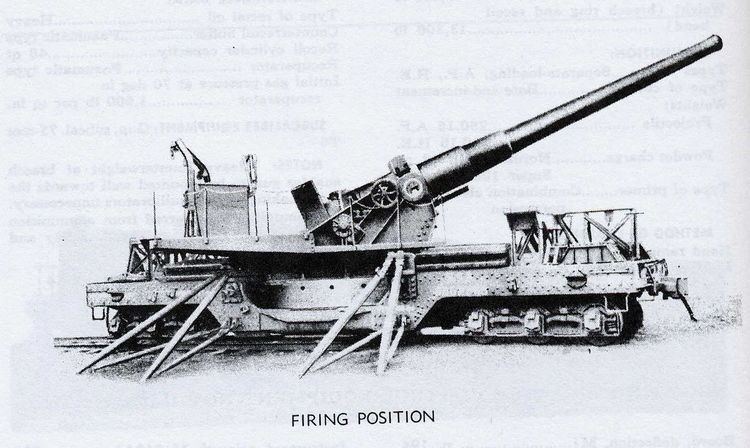In service 1941–1946 | Place of origin United States Used by United States | |
 | ||
Manufacturer Baldwin Locomotive Works (railway carriage) | ||
The 8-inch Navy gun MkVIM3A2 on railway mount M1A1 was a World War II improved replacement for the World War I-era 8-inch (203 mm) M1888 gun and was used by the US Army's Coast Artillery Corps in US harbor defenses. The guns were also mounted in fixed emplacements on the barbette carriage M1A1. These guns were US Navy surplus 8"/45 caliber guns from battleships scrapped under the 1922 Washington Naval Treaty. Mark VI (also Mark 6) was the Navy designation. The Army designation for this gun was "8-inch Navy gun MkVIM3A2".
Contents
History
The ex-Navy Mark VI railway gun was quickly put together at the start of World War II, to supplement the older World War I 8-inch M1888 railway gun. It was developed from an experimental 12-inch (305 mm) railway howitzer carriage of World War I. The all-around rotating mount and outriggers were designed to allow the gun to track a moving target for coast defense. These guns had a very short life in Army use, entering service in February 1941 and being cut up for scrap immediately after the war. The guns were the Navy's 8-inch (203 mm)/45 caliber Mark VI, and were originally secondary armament on Virginia- and Connecticut-class battleships launched 1904-06 and scrapped in the 1920s. They were mounted in both fixed emplacements and on the M1A1 railway carriage.
Deployment
Sighting and fire control equipment
The following sighting equipment was used with the gun.
support cars
Surviving Examples
Four weapons of this type survive:
